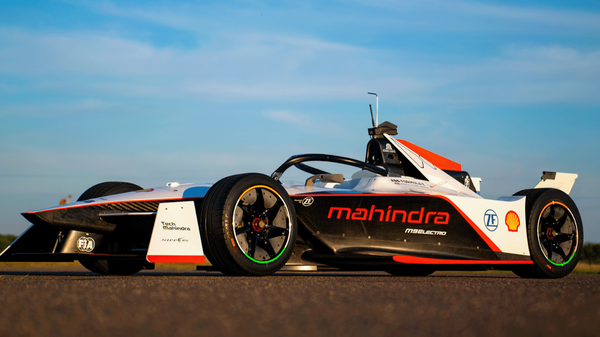

Formula E has been an underrated and less noticed motorsport series. While many have been critical of the format of the electric car racing series, it actually is a lot of fun to watch. Although, a major misconception that often occurs is confusion between Formula E and F1. FE does have a similar vibe to that of F1. But, it differs a lot in numerous aspects from the pinnacle of motorsport. Let’s understand the differences and some similarities between Formula E and Formula 1.
Watch What’s Trending Now!
ADVERTISEMENT
Article continues below this ad
Firstly, Formula E races with an electric power unit which is a Lithium-ion battery. The Gen1 cars introduced in 2014 had a 28 kWh battery that has improved in the Gen3 cars post-2022.
ADVERTISEMENT
Article continues below this ad
This will be impacting the performance of the Formula E car to make it a lot quicker. Though, relative to F1, FE cars may still be slower going ahead. The F1 cars currently use a 1.6 liter V6 Turbo Hybrid engine. This includes the hybrid system, combining electric power with combustion engine power.
Overall, the difference in performance was quite huge in the initial days of Formula E. Though, now FE cars are closing the gap in terms of performance with improving technology. Earlier, the power output was around 200 kW which was increased to 250 kW in the Gen2 cars. As per Autosport, in the Gen 3 cars, the power output has been increased to 600 kW, courtesy of an additional rear axle motor.

ADVERTISEMENT
Article continues below this ad
The Gen 3 cars have a standard front powertrain that produces 350 kW. While the new rear axle powertrain produces 250 kW. This is a major change that boosts up the power output to 600 kW which is equivalent to approx. 800 bhp.
In contrast, F1 cars generate up to 1000 bhp, split into 850 bhp from the internal combustion engine and 150 bhp from the electrical system. Although, the 2026 F1 power unit’s electric power output will be increased to 469 bhp which is 350 kW, thus increasing the contribution of electric power in the hybrid system.
How are Formula E cars different from F1 cars?
In general, Formula E cars have been smaller in dimensions relative to F1 cars. The 2022 aero regulations in Formula 1 have attempted to make F1 cars smaller. But, they still are bigger relative to the FE cars.
Though, in terms of weight, F1 does go lighter, given how much they have to rely on aerodynamics. So, a lighter car naturally goes faster in F1 with the high reliance on downforce generation. Meanwhile, Formula E is a lot less dependent on aerodynamics.
The class of Season 9 ⚡#MexicoCityEPrix pic.twitter.com/q1sXtMvb8O
— ABB FIA Formula E World Championship (@FIAFormulaE) January 12, 2023
The top speeds have also been a major difference between the two series. While F1 cars can easily reach up to 220 mph, the top speeds of FE cars have been under 200 mph.
Still, the Gen3 cars promise to hit top speeds of 200 mph consistently with the increased power. FE cars can go from 0 to 60 mph in 3 seconds. But F1 cars can do the same in under 2 seconds.
How does Formula E race differently than F1?
Formula E has a different race weekend structure relative to F1. An F1 weekend is a 3-day event that includes 3 free practice sessions, a qualifying session, and the main race happening on Sunday. Meanwhile, it all can get wrapped up in a day for Formula E.
There are 2 free practice sessions (FP1 can take place a day before) which are followed by a qualifying session. As per Formula E’s YouTube video, the race, known as the E-Prix is also scheduled on the same day and is a 45-minute event. The cars race for as many laps as possible within the time limit of 45 – 60 minutes.
Back in the day, the car battery capacity could only last 30 minutes, so drivers used to swap cars in a pit stop in the middle of the race. Although, since the Gen2 cars have been introduced; this issue does not occur.
Unlike Formula E, F1 drivers cannot change cars in the middle of the race. The F1 Grand Prix can last up to 2 hours. So they instead have to swap tires in a 2 to 4-second pit stop on average. On the contrary, FE cars only get 2 sets of tires across the event. These tires are all-weather treaded tires. So, there are no tire changes in the E-Prix, relative to the mandatory one pitstop for tires in the F1 Grand Prix.
Read More: Is F1 Merging With Formula E? CEO Stefano Domenicali Says – “Never Say Never”
In comparison, F1 has almost 13 sets of dry-weather tires and 7 sets of wet-weather tires across the weekend. Usually, the 3 dry tire compounds change for every race dependent on track characteristics.
Coming to the tracks, Formula E mainly races on street tracks in major cities, located in the city center. While F1 races on a lot of custom-built tracks and circuits. Though, in the last few years, F1 has also started racing on street circuits too.
Lastly, the points system used in both series is the same standard FIA system 25-18-15-12-10-8-6-4-2-1, with 25 points for the winner and all the Top 10 drivers scoring points. The 1 point for the fastest lap is also the same in both categories. Though, in FE, the pole position winner also gets 3 additional points.
WATCH THIS STORY: F1 community makes NASCAR wish as 2023 roster guarantees saturation point
What do you think about Formula E? Let us know your thoughts about how it compares to F1.
ADVERTISEMENT
ADVERTISEMENT
ADVERTISEMENT
ADVERTISEMENT


